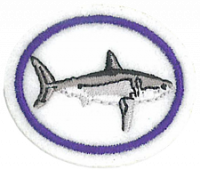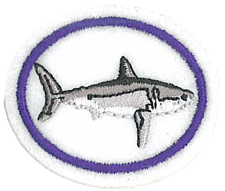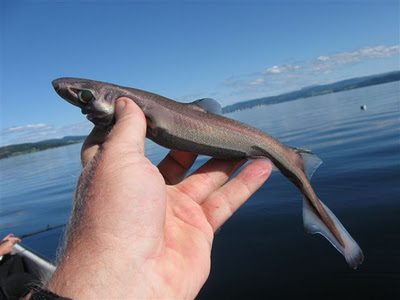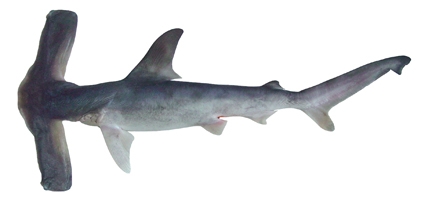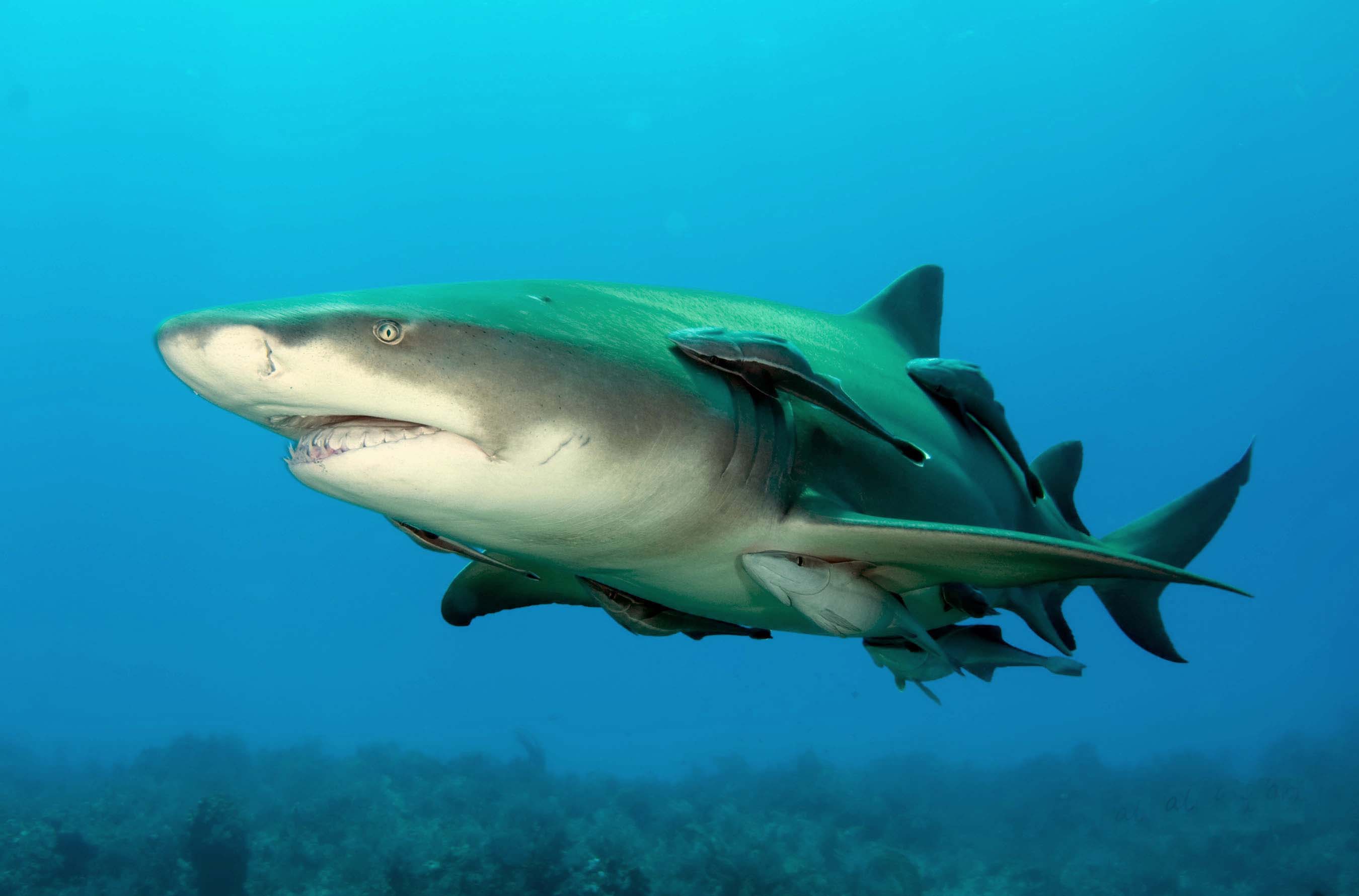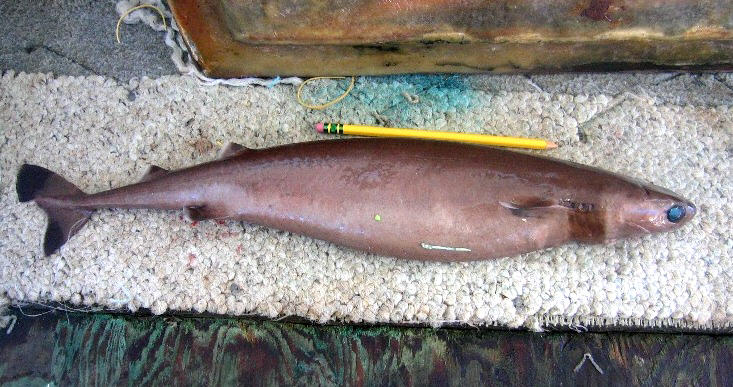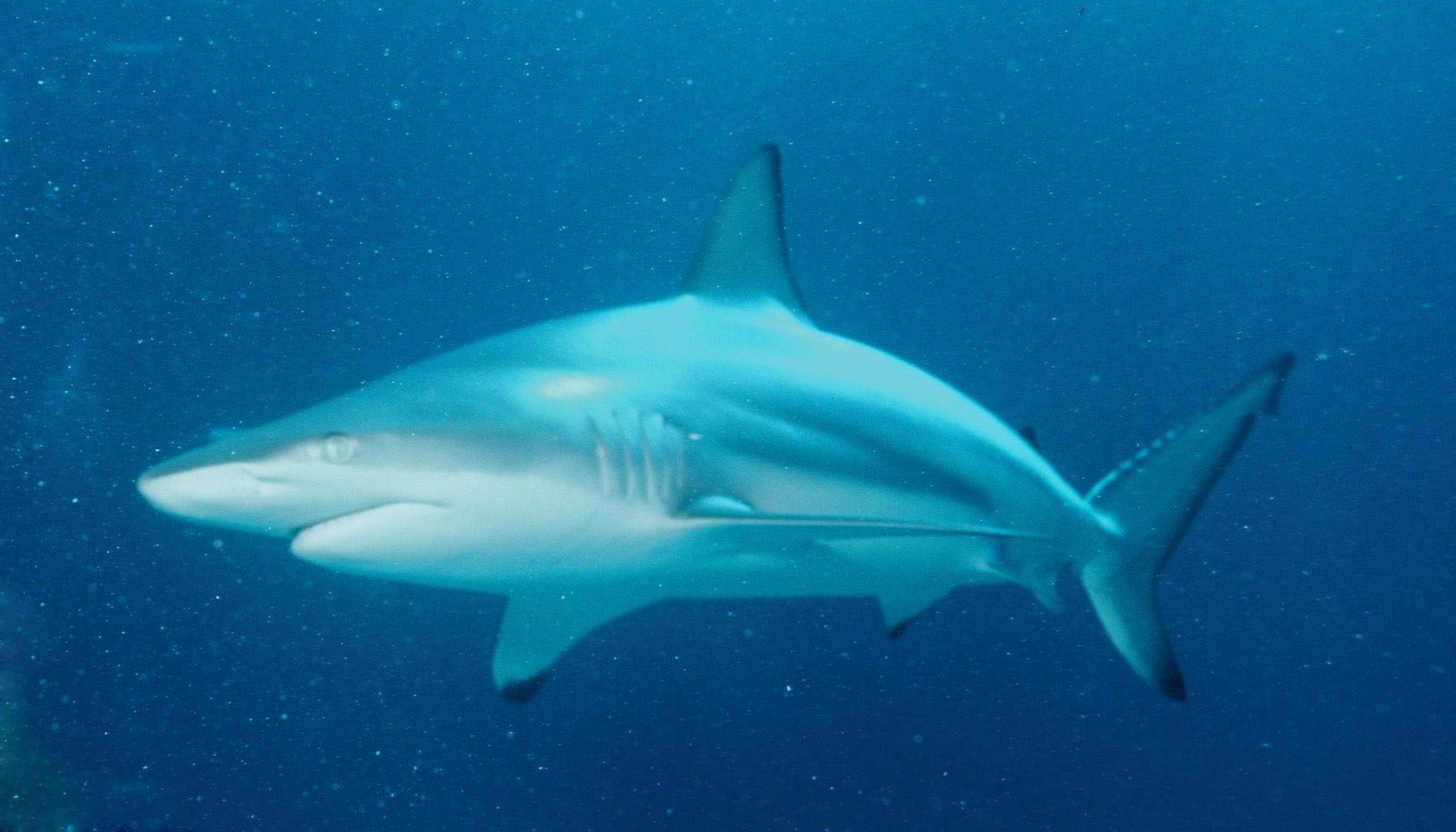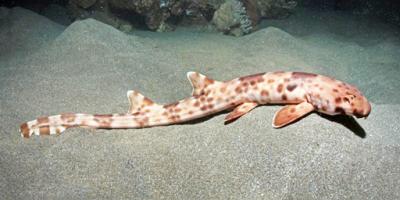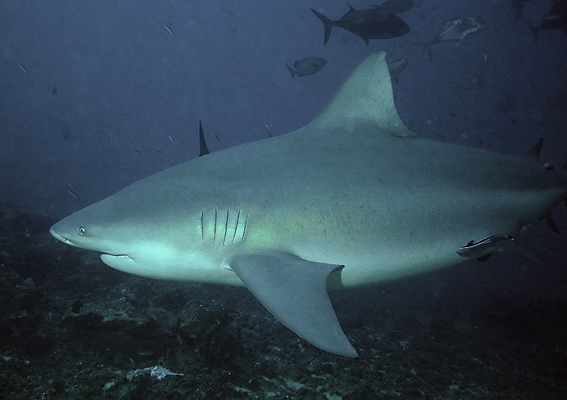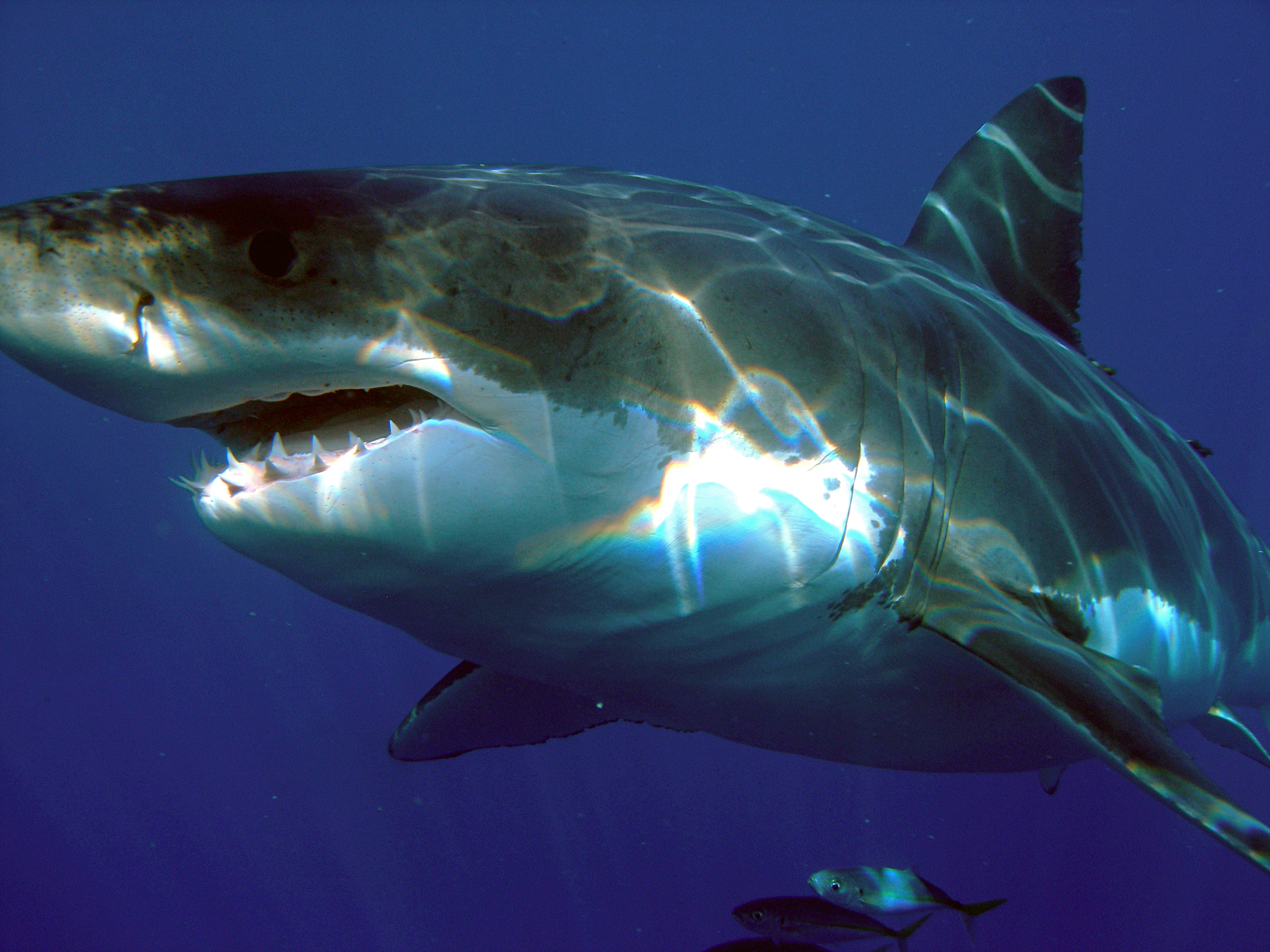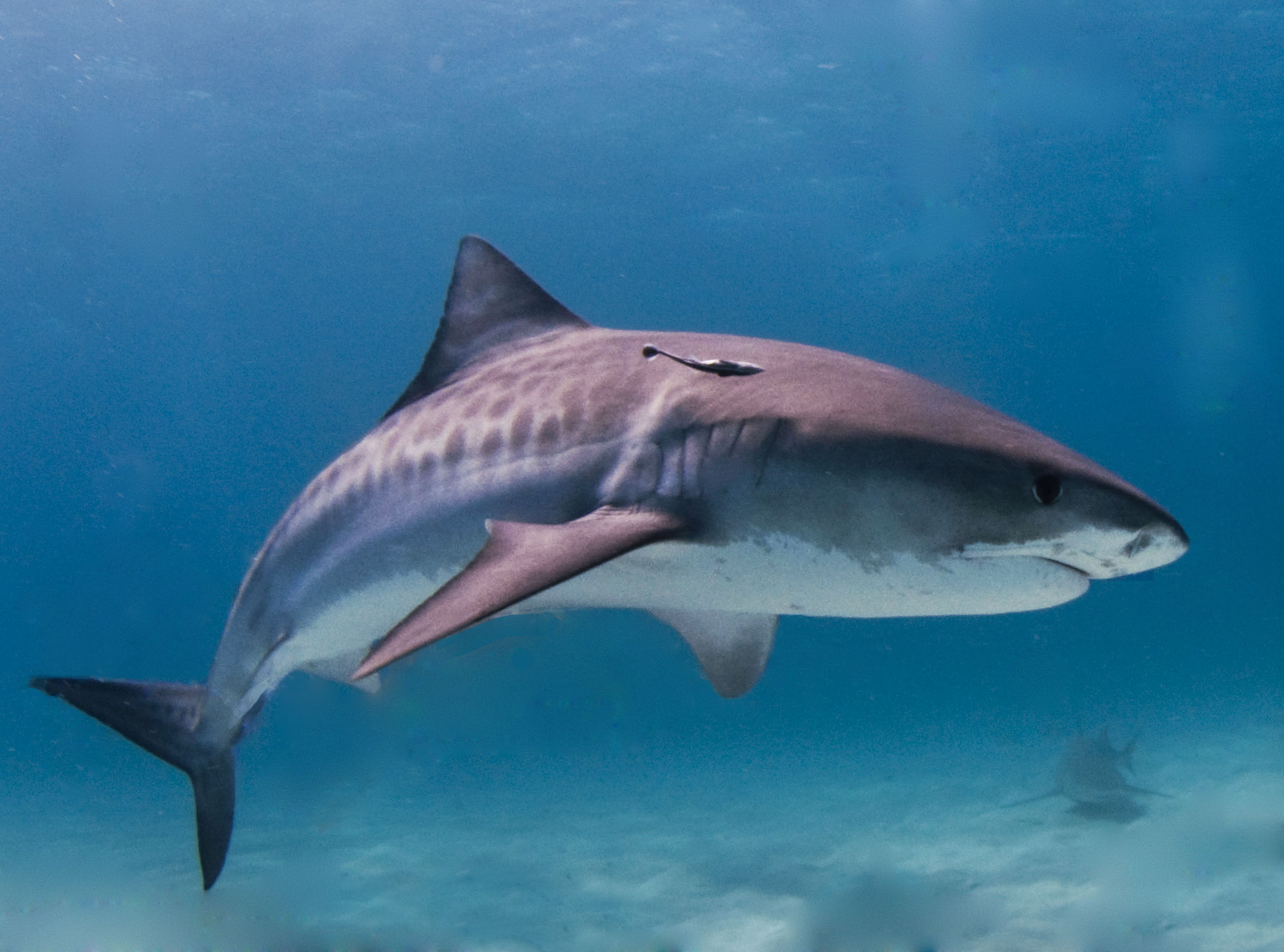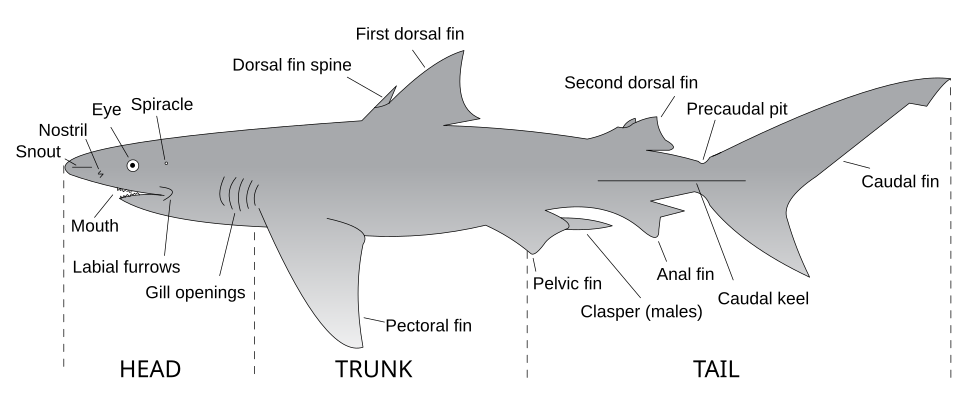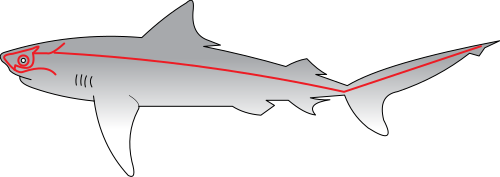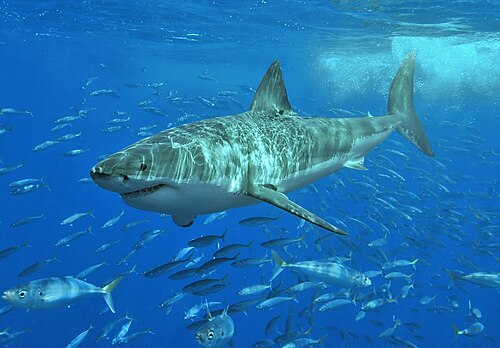Difference between revisions of "AY Honors/Sharks/Answer Key"
(- Completed Honors category) |
m |
||
| (23 intermediate revisions by 3 users not shown) | |||
| Line 1: | Line 1: | ||
| − | < | + | {{HonorSubpage}} |
| − | <noinclude><translate><!--T: | + | <!--{{Honor_Master|honor=Sharks|master=Naturalist|group=Fauna}}--> |
| + | <!--{{Honor_Master|honor=Sharks|master=Zoology|group=Fauna}}--> | ||
| + | <section begin="Body" /> | ||
| + | |||
| + | {{ansreq|page={{#titleparts:{{PAGENAME}}|2|1}}|num=1}} | ||
| + | <noinclude><translate><!--T:88--> | ||
</noinclude> | </noinclude> | ||
| − | + | <!-- 1. On what day of Creation Week were sharks created? --> | |
| − | |||
| − | |||
| − | |||
| − | |||
| − | |||
| − | |||
| − | |||
| − | |||
| − | |||
| − | |||
| − | |||
| − | |||
Sharks were created on the fifth day: | Sharks were created on the fifth day: | ||
{{Bible verse | {{Bible verse | ||
| Line 22: | Line 15: | ||
|version=NKJV | |version=NKJV | ||
|text= | |text= | ||
| − | Then God said, “Let the waters swarm with fish and other life. Let the skies be filled with birds of every kind.” So God created great sea creatures and every living thing that scurries and swarms in the water, and every sort of bird—each producing offspring of the same kind. And God saw that it was good. | + | Then God said, “Let the waters swarm with fish and other life. Let the skies be filled with birds of every kind.” So God created great sea creatures and every living thing that scurries and swarms in the water, and every sort of bird—each producing offspring of the same kind. And God saw that it was good. Then God blessed them, saying, “Be fruitful and multiply. Let the fish fill the seas, and let the birds multiply on the earth.” |
| − | |||
| − | |||
And evening passed and morning came, marking the fifth day. | And evening passed and morning came, marking the fifth day. | ||
}} | }} | ||
| − | ==2. What is the study of sharks called? | + | <!--T:89--> |
| − | The study of the subclass of fish known as cartilaginous (skeleton made from cartilage like in your nose, with no bones) including sharks, rays, and skates is called ''Elasmobranchology''. | + | <noinclude></translate></noinclude> |
| + | {{CloseReq}} <!-- 1 --> | ||
| + | {{ansreq|page={{#titleparts:{{PAGENAME}}|2|1}}|num=2}} | ||
| + | <noinclude><translate><!--T:90--> | ||
| + | </noinclude> | ||
| + | <!-- 2. What is the study of sharks called? --> | ||
| + | The study of the subclass of fish known as cartilaginous (skeleton made from cartilage like in your nose, with no bones) including sharks, rays, and skates is called ''Elasmobranchology''. These fish are collectively called the ''elasmobranchii''. | ||
| − | ==3. Identify from pictures or personal observation 10 species of sharks. | + | <!--T:91--> |
| + | <noinclude></translate></noinclude> | ||
| + | {{CloseReq}} <!-- 2 --> | ||
| + | {{ansreq|page={{#titleparts:{{PAGENAME}}|2|1}}|num=3}} | ||
| + | <noinclude><translate><!--T:92--> | ||
| + | </noinclude> | ||
| + | <!-- 3. Identify from pictures or personal observation 10 species of sharks. --> | ||
<!--T:6--> | <!--T:6--> | ||
| Line 45: | Line 48: | ||
*[https://en.wikipedia.org/wiki/Hexanchiformes Cow and frilled sharks] | *[https://en.wikipedia.org/wiki/Hexanchiformes Cow and frilled sharks] | ||
*Squaliformes sharks | *Squaliformes sharks | ||
| − | {{: | + | {{:AY Honors/Species Account/Etmopterus perryi}} |
<!--T:10--> | <!--T:10--> | ||
| Line 58: | Line 61: | ||
<!--T:13--> | <!--T:13--> | ||
*Carpet sharks | *Carpet sharks | ||
| − | {{: | + | {{:AY Honors/Species Account/Brachaelurus waddi}} |
| − | {{: | + | {{:AY Honors/Species Account/Rhincodon typus}} |
<!--T:14--> | <!--T:14--> | ||
| Line 69: | Line 72: | ||
<!--T:16--> | <!--T:16--> | ||
| − | {{: | + | {{:AY Honors/Species Account/Sphyrna mokarran}} |
<!--T:17--> | <!--T:17--> | ||
| − | {{: | + | {{:AY Honors/Species Account/Eusphyra blochii}} |
<!--T:18--> | <!--T:18--> | ||
| − | {{: | + | {{:AY Honors/Species Account/Mitsukurina owstoni}} |
<!--T:19--> | <!--T:19--> | ||
| − | {{: | + | {{:AY Honors/Species Account/Negaprion brevirostris}} |
<!--T:20--> | <!--T:20--> | ||
| − | {{: | + | {{:AY Honors/Species Account/Isurus oxyrinchus}} |
<!--T:21--> | <!--T:21--> | ||
| − | {{: | + | {{:AY Honors/Species Account/Isistius brasiliensis}} |
<!--T:22--> | <!--T:22--> | ||
| − | {{: | + | {{:AY Honors/Species Account/Carcharhinus limbatus}} |
<!--T:23--> | <!--T:23--> | ||
| − | {{: | + | {{:AY Honors/Species Account/Carcharhinus brachyurus}} |
<!--T:24--> | <!--T:24--> | ||
| − | {{: | + | {{:AY Honors/Species Account/Carcharhinus longimanus}} |
<!--T:25--> | <!--T:25--> | ||
| − | {{: | + | {{:AY Honors/Species Account/Hemiscyllium Halmahera}} |
<!--T:26--> | <!--T:26--> | ||
| − | {{: | + | {{:AY Honors/Species Account/Carcharhinus leucas}} |
<!--T:27--> | <!--T:27--> | ||
| − | {{: | + | {{:AY Honors/Species Account/Carcharodon carcharias}} |
<!--T:28--> | <!--T:28--> | ||
| − | {{: | + | {{:AY Honors/Species Account/Prionace glauca}} |
<!--T:29--> | <!--T:29--> | ||
| − | {{: | + | {{:AY Honors/Species Account/Galeocerdo cuvier}} |
<!--T:30--> | <!--T:30--> | ||
| − | {{: | + | {{:AY Honors/Species Account/Somniosus microcephalus}} |
<!--T:31--> | <!--T:31--> | ||
| − | {{: | + | {{:AY Honors/Species Account/Megachasma pelagios}} |
| − | ==4. Draw a shark and identify the following shark parts:== <!--T: | + | <!--T:93--> |
| − | + | <noinclude></translate></noinclude> | |
| − | + | {{CloseReq}} <!-- 3 --> | |
| − | + | {{ansreq|page={{#titleparts:{{PAGENAME}}|2|1}}|num=4}} | |
| − | + | <noinclude><translate><!--T:94--> | |
| − | + | </noinclude> | |
| − | + | <!-- 4. Draw a shark and identify the following shark parts: --> | |
| − | + | <noinclude></translate></noinclude> | |
| − | + | {{ansreq|page={{#titleparts:{{PAGENAME}}|2|1}}|num=4a}} | |
| − | + | <noinclude><translate><!--T:95--> | |
| − | + | </noinclude> | |
| − | + | Top of shark, forward | |
| − | + | <noinclude></translate></noinclude> | |
| + | {{CloseReq}} <!-- 4a --> | ||
| + | {{ansreq|page={{#titleparts:{{PAGENAME}}|2|1}}|num=4b}} | ||
| + | <noinclude><translate><!--T:96--> | ||
| + | </noinclude> | ||
| + | Top of shark, rear | ||
| + | <noinclude></translate></noinclude> | ||
| + | {{CloseReq}} <!-- 4b --> | ||
| + | {{ansreq|page={{#titleparts:{{PAGENAME}}|2|1}}|num=4c}} | ||
| + | <noinclude><translate><!--T:97--> | ||
| + | </noinclude> | ||
| + | Sides of shark, like arms | ||
| + | <noinclude></translate></noinclude> | ||
| + | {{CloseReq}} <!-- 4c --> | ||
| + | {{ansreq|page={{#titleparts:{{PAGENAME}}|2|1}}|num=4d}} | ||
| + | <noinclude><translate><!--T:98--> | ||
| + | </noinclude> | ||
| + | Bottom of shark, toward rear but ahead of anal fin | ||
| + | <noinclude></translate></noinclude> | ||
| + | {{CloseReq}} <!-- 4d --> | ||
| + | {{ansreq|page={{#titleparts:{{PAGENAME}}|2|1}}|num=4e}} | ||
| + | <noinclude><translate><!--T:99--> | ||
| + | </noinclude> | ||
| + | Bottom of shark, toward rear | ||
| + | <noinclude></translate></noinclude> | ||
| + | {{CloseReq}} <!-- 4e --> | ||
| + | {{ansreq|page={{#titleparts:{{PAGENAME}}|2|1}}|num=4f}} | ||
| + | <noinclude><translate><!--T:100--> | ||
| + | </noinclude> | ||
| + | The fins at the tail end of the shark | ||
| + | <noinclude></translate></noinclude> | ||
| + | {{CloseReq}} <!-- 4f --> | ||
| + | {{ansreq|page={{#titleparts:{{PAGENAME}}|2|1}}|num=4g}} | ||
| + | <noinclude><translate><!--T:101--> | ||
| + | </noinclude> | ||
| + | Used to process water for oxygen | ||
| + | <noinclude></translate></noinclude> | ||
| + | {{CloseReq}} <!-- 4g --> | ||
| + | {{ansreq|page={{#titleparts:{{PAGENAME}}|2|1}}|num=4h}} | ||
| + | <noinclude><translate><!--T:102--> | ||
| + | </noinclude> | ||
| + | Top of shark, bones like on humans | ||
| + | <noinclude></translate></noinclude> | ||
| + | {{CloseReq}} <!-- 4h --> | ||
| + | {{ansreq|page={{#titleparts:{{PAGENAME}}|2|1}}|num=4i}} | ||
| + | <noinclude><translate><!--T:103--> | ||
| + | </noinclude> | ||
| + | On head | ||
| + | <noinclude></translate></noinclude> | ||
| + | {{CloseReq}} <!-- 4i --> | ||
| + | {{ansreq|page={{#titleparts:{{PAGENAME}}|2|1}}|num=4j}} | ||
| + | <noinclude><translate><!--T:104--> | ||
| + | </noinclude> | ||
| + | The big nose, front end | ||
| + | <noinclude></translate></noinclude> | ||
| + | {{CloseReq}} <!-- 4j --> | ||
| + | {{ansreq|page={{#titleparts:{{PAGENAME}}|2|1}}|num=4k}} | ||
| + | <noinclude><translate><!--T:105--> | ||
| + | </noinclude> | ||
| + | The nose opening | ||
| + | <noinclude></translate></noinclude> | ||
| + | {{CloseReq}} <!-- 4k --> | ||
| + | {{ansreq|page={{#titleparts:{{PAGENAME}}|2|1}}|num=4l}} | ||
| + | <noinclude><translate><!--T:106--> | ||
| + | </noinclude> | ||
| + | Where you find the teeth, not a good place for your arm | ||
[[File:Parts of a shark.svg|thumb|750px|Parts of a Shark]] | [[File:Parts of a shark.svg|thumb|750px|Parts of a Shark]] | ||
{{clear}} | {{clear}} | ||
| − | ==5. Explain the shark sensory system: Smell, Sight, Taste, Hearing, Touch, Electroreception | + | <!--T:107--> |
| + | <noinclude></translate></noinclude> | ||
| + | {{CloseReq}} <!-- 4l --> | ||
| + | {{CloseReq}} <!-- 4 --> | ||
| + | {{ansreq|page={{#titleparts:{{PAGENAME}}|2|1}}|num=5}} | ||
| + | <noinclude><translate></noinclude> | ||
| + | <!-- 5. Explain the shark sensory system: Smell, Sight, Taste, Hearing, Touch, Electroreception --> | ||
Smell, sight, taste, hearing, touch, and electroreception are the six sensory systems sharks are equipped with allowing them to successfully exploit the environment they live in by locating prey, avoiding danger and finding a mate. | Smell, sight, taste, hearing, touch, and electroreception are the six sensory systems sharks are equipped with allowing them to successfully exploit the environment they live in by locating prey, avoiding danger and finding a mate. | ||
| − | ===Smell=== | + | ===Smell=== <!--T:108--> |
| − | Sharks possess a pair of nostrils (also referred to as nares), just under the edge of their snout. The nares are completely separate from the mouth and throat and do not aid in respiration. Instead they are used purely for olfaction. Each nare is divided into two channels by a nasal flap. The water enters one channel (incurrent aperture) and passes over an area called the olfactory lamellae which contain neuro-sensory cells. | + | Sharks possess a pair of nostrils (also referred to as nares), just under the edge of their snout. The nares are completely separate from the mouth and throat and do not aid in respiration. Instead they are used purely for olfaction. Each nare is divided into two channels by a nasal flap. The water enters one channel (incurrent aperture) and passes over an area called the olfactory lamellae which contain neuro-sensory cells. These then send chemosensory information via the olfactory bulb to the large olfactory lobe in the shark's forebrain. The olfactory lamellae are a series of folds on the surface of the olfactory sac; these folds increase the surface area and provide the shark with a greater opportunity of detecting smells. After passing through the olfactory sac the water is then channeled out through the recurrent aperture. |
<!--T:34--> | <!--T:34--> | ||
| Line 143: | Line 217: | ||
===Sight=== <!--T:35--> | ===Sight=== <!--T:35--> | ||
| − | In the majority of shark species, the eyes are well developed, complex structures containing rod (highly sensitive to light intensity) and in some species cone cells (may allow sharks to see in color). They can control the amount of light entering the eye by dilating or contracting their pupils. Focusing is controlled by the rectus muscles which pull the lens closer to or further away from the retina. | + | In the majority of shark species, the eyes are well developed, complex structures containing rod (highly sensitive to light intensity) and in some species cone cells (may allow sharks to see in color). They can control the amount of light entering the eye by dilating or contracting their pupils. Focusing is controlled by the rectus muscles which pull the lens closer to or further away from the retina. When used in conjunction with the oblique muscles, movement of the entire eye is achieved. |
<!--T:36--> | <!--T:36--> | ||
| − | Most sharks have excellent vision in dim light conditions; this is due to the retina containing millions of rod cells together with a structure called the ''tapetum lucidum''. This is a layer found behind the retina which reflects light back onto the retina, amplifying the image. | + | Most sharks have excellent vision in dim light conditions; this is due to the retina containing millions of rod cells together with a structure called the ''tapetum lucidum''. This is a layer found behind the retina which reflects light back onto the retina, amplifying the image. Pigmented cells cover the ''tapetum'' reducing reflections and protecting the retina in bright light. |
<!--T:37--> | <!--T:37--> | ||
| − | Sharks have an upper and lower eyelid but these usually do not meet and therefore do not provide a full cover for the eye. Some sharks, such as the tiger shark, have a “third eyelid” known as the nictitating membrane. This rolls up from the base of the eye to completely cover the eyeball. | + | Sharks have an upper and lower eyelid but these usually do not meet and therefore do not provide a full cover for the eye. Some sharks, such as the tiger shark, have a “third eyelid” known as the nictitating membrane. This rolls up from the base of the eye to completely cover the eyeball. The use of this nicitating membrane is demonstrated regularly in shark documentaries, and most notably when the shark is attacking its prey. Species like the white shark which do not have the nicitating membrane often employ a different strategy to safeguard the eye; they roll the eye into the back of the socket exposing a hardened pad at the rear of the eyeball. The existence of such strategies designed to protect the eye, highlight the importance of sight as a sensory function to the shark. |
<!--T:38--> | <!--T:38--> | ||
| − | Some sharks, such as the blue shark, have a light sensitive “third eye”. Indicated by a lighter colored spot called the pineal window on the top of the sharks head directly above the pineal gland. | + | Some sharks, such as the blue shark, have a light sensitive “third eye”. Indicated by a lighter colored spot called the pineal window on the top of the sharks head directly above the pineal gland. Athough speculative, it is suggested that the shark may use this to aid navigation. |
===Taste=== <!--T:39--> | ===Taste=== <!--T:39--> | ||
| − | As a shark bites into an object (prey or otherwise), chemicals are released and attach themselves to gustatory sensory cells present in the shark's mouth and throat. | + | As a shark bites into an object (prey or otherwise), chemicals are released and attach themselves to gustatory sensory cells present in the shark's mouth and throat. These gustatory cells then send messages to structures (the thalamus and the hypothalamus) located in the shark's forebrain. The shark will then either accept or reject the object it has bitten. |
===Hearing=== <!--T:40--> | ===Hearing=== <!--T:40--> | ||
| − | The shark ear is located in the frontal skull (chrondocranium) and is completely internal with only a tiny opening on the shark's head - not the spiracle which is involved in respiration. The ear detects sound with frequencies ranging from <20 to about 800 Hertz (humans detect sound between 20 and 20,000 Hertz). | + | The shark ear is located in the frontal skull (chrondocranium) and is completely internal with only a tiny opening on the shark's head - not the spiracle which is involved in respiration. The ear detects sound with frequencies ranging from <20 to about 800 Hertz (humans detect sound between 20 and 20,000 Hertz). Most sharks show an attraction to infrasound (<20Hz). This is most likely due to the low frequency sounds emitted by struggling prey. The shark ear is also used for balance and orientation (by utilizing the fluid-filled semi-circular canals, with the movement of the fluid activating sensory hair cells) and pressure detection (by direct activation of the hair cells within the canals allowing sensory signals to be relayed to the brain via the auditory nerve). |
===Touch=== <!--T:41--> | ===Touch=== <!--T:41--> | ||
| − | A shark can feel a certain amount of direct contact due to free nerve endings embedded in the skin, mouth, jaws and even teeth. They can also sense things internally due to the presence of proprioceptors (microscopic sensory cells) found throughout the muscles, joints, digestive system and blood vessels. Sharks have a heightened sense of indirect touch via water displacement around the shark's body. | + | A shark can feel a certain amount of direct contact due to free nerve endings embedded in the skin, mouth, jaws and even teeth. They can also sense things internally due to the presence of proprioceptors (microscopic sensory cells) found throughout the muscles, joints, digestive system and blood vessels. Sharks have a heightened sense of indirect touch via water displacement around the shark's body. This is accomplished by the movement of sensory hair cells which are present in the neuromasts that make up the lateral line system. This system is comprised of a series of canals or channels usually visible to the naked eye as a series of pores or lines, these run from the head all the way to the upper lobe of the tail. |
[[File:Sharks Lateral Line.svg|thumb|400px|Lateral Line]] | [[File:Sharks Lateral Line.svg|thumb|400px|Lateral Line]] | ||
{{clear}} | {{clear}} | ||
===Electroreception=== <!--T:42--> | ===Electroreception=== <!--T:42--> | ||
| − | The Ampullae of Lorenzini are specialized pores consisting of a small chamber (the ampulla) and a sub-dermal canal which projects outward to the surface of the skin. | + | The Ampullae of Lorenzini are specialized pores consisting of a small chamber (the ampulla) and a sub-dermal canal which projects outward to the surface of the skin. The ampulla contains hundreds of sensory hair cells. The wall of the canal contains a double layer of connective tissue fibers and epithelial cells, which are tightly joined together to form a high electrical resistance between the inner and outer wall of the canal. The canal and ampulla themselves are filled with a high potassium, low resistance gel that forms an electrical core conductor with a resistance equaling that of seawater. |
<!--T:43--> | <!--T:43--> | ||
Fish carry an electrical charge different to that of seawater and so a weak voltage is created (by the movement of positive and negative particles moving back and forth shifting electrons in an attempt to become stable). Because the salt in the water contains both sodium and chlorine ions which can move freely in the water the electricity itself is transported, and this is what the ampullae of lorenzini is able to detect. | Fish carry an electrical charge different to that of seawater and so a weak voltage is created (by the movement of positive and negative particles moving back and forth shifting electrons in an attempt to become stable). Because the salt in the water contains both sodium and chlorine ions which can move freely in the water the electricity itself is transported, and this is what the ampullae of lorenzini is able to detect. | ||
| − | ==6. Name the largest member of the shark family and its maximum adult size. | + | <!--T:109--> |
| + | <noinclude></translate></noinclude> | ||
| + | {{CloseReq}} <!-- 5 --> | ||
| + | {{ansreq|page={{#titleparts:{{PAGENAME}}|2|1}}|num=6}} | ||
| + | <noinclude><translate><!--T:110--> | ||
| + | </noinclude> | ||
| + | <!-- 6. Name the largest member of the shark family and its maximum adult size. --> | ||
[[File:Snorkeling whale shark 1.JPG|thumb|400px|Whale Shark]] | [[File:Snorkeling whale shark 1.JPG|thumb|400px|Whale Shark]] | ||
| − | The Whale Shark grows from 41 to 46 feet (12.5 to 14 meters) long. The largest confirmed specimen was 21.5 metric tons (47,000 lb), about the length and weight of a school bus with all the kids on it. | + | The Whale Shark grows from 41 to 46 feet (12.5 to 14 meters) long. The largest confirmed specimen was 21.5 metric tons (47,000 lb), about the length and weight of a school bus with all the kids on it. |
<!--T:45--> | <!--T:45--> | ||
| − | Whale sharks are not whales, but they are as big as whales and filter feeders (processing plankton) like some whales. | + | Whale sharks are not whales, but they are as big as whales and filter feeders (processing plankton) like some whales. |
| + | {{#widget:YouTube|id=hRMjuoqVgXU}} | ||
| + | |||
| + | <!--T:87--> | ||
{{clear}} | {{clear}} | ||
| − | ==7. Name the most aggressive member of the shark family. | + | <!--T:111--> |
| + | <noinclude></translate></noinclude> | ||
| + | {{CloseReq}} <!-- 6 --> | ||
| + | {{ansreq|page={{#titleparts:{{PAGENAME}}|2|1}}|num=7}} | ||
| + | <noinclude><translate><!--T:112--> | ||
| + | </noinclude> | ||
| + | <!-- 7. Name the most aggressive member of the shark family. --> | ||
[[File:White shark.jpg|thumb|400px|Great White Shark]] | [[File:White shark.jpg|thumb|400px|Great White Shark]] | ||
The great white shark is arguably the world's largest known extant macropredatory fish, and is one of the primary predators of marine mammals. It is also known to prey upon a variety of other marine animals, including fish and seabirds. It is ranked first in having the most attacks on humans. | The great white shark is arguably the world's largest known extant macropredatory fish, and is one of the primary predators of marine mammals. It is also known to prey upon a variety of other marine animals, including fish and seabirds. It is ranked first in having the most attacks on humans. | ||
| Line 186: | Line 275: | ||
{{clear}} | {{clear}} | ||
| − | ==8. Name the predators of the Great White Shark. | + | <!--T:113--> |
| + | <noinclude></translate></noinclude> | ||
| + | {{CloseReq}} <!-- 7 --> | ||
| + | {{ansreq|page={{#titleparts:{{PAGENAME}}|2|1}}|num=8}} | ||
| + | <noinclude><translate><!--T:114--> | ||
| + | </noinclude> | ||
| + | <!-- 8. Name the predators of the Great White Shark. --> | ||
The Great White Sharks are apex predators, which means they sit at the very top of the food chain. They patrol the ocean and regulate a healthy marine ecosystem. A great white shark's only predators are: | The Great White Sharks are apex predators, which means they sit at the very top of the food chain. They patrol the ocean and regulate a healthy marine ecosystem. A great white shark's only predators are: | ||
*Humans (fishing, boat collisions) | *Humans (fishing, boat collisions) | ||
*Other Great White Sharks | *Other Great White Sharks | ||
| − | *Rarely - Orca Whales ([https://www.youtube.com/watch?v= | + | *Rarely - Orca Whales ([https://www.youtube.com/watch?v=K9I_DcSbZjI amazing video proof]) |
| − | ==9. Explain the shark breeding habits. | + | <!--T:115--> |
| − | Biologists have tagged and release thousands of sharks to determine their breeding habits. Their findings reveal that most non migrating shark species return to the same shallow | + | <noinclude></translate></noinclude> |
| + | {{CloseReq}} <!-- 8 --> | ||
| + | {{ansreq|page={{#titleparts:{{PAGENAME}}|2|1}}|num=9}} | ||
| + | <noinclude><translate><!--T:116--> | ||
| + | </noinclude> | ||
| + | <!-- 9. Explain the shark breeding habits. --> | ||
| + | Biologists have tagged and release thousands of sharks to determine their breeding habits. Their findings reveal that most non migrating shark species return to the same shallow breeding grounds every year. After they reach maturity (10 to 14 years) they return to their birth grounds to select a mate. After a ten to twelve months gestation period, a female shark can have a litter of up to eighteen little sharks. After their birth, most species abandon their young and they are left to fend for themselves. The young sharks remain in the shallow waters for two or three years, until they are large enough to defend themselves from bigger predators. Then they head out into the open seas, and the cycle begins again. | ||
| − | ==10. How do sharks give birth? | + | <!--T:117--> |
| − | Different species of shark give birth in different ways. | + | <noinclude></translate></noinclude> |
| + | {{CloseReq}} <!-- 9 --> | ||
| + | {{ansreq|page={{#titleparts:{{PAGENAME}}|2|1}}|num=10}} | ||
| + | <noinclude><translate><!--T:118--> | ||
| + | </noinclude> | ||
| + | <!-- 10. How do sharks give birth? --> | ||
| + | Different species of shark give birth in different ways. Some lay eggs, some hatch eggs inside the mother, and others give birth to live young. | ||
| − | ==11. Discuss with a group the following== <!--T: | + | <!--T:119--> |
| − | + | <noinclude></translate></noinclude> | |
| + | {{CloseReq}} <!-- 10 --> | ||
| + | {{ansreq|page={{#titleparts:{{PAGENAME}}|2|1}}|num=11}} | ||
| + | <noinclude><translate><!--T:120--> | ||
| + | </noinclude> | ||
| + | <!-- 11. Discuss with a group the following --> | ||
| + | <noinclude></translate></noinclude> | ||
| + | {{ansreq|page={{#titleparts:{{PAGENAME}}|2|1}}|num=11a}} | ||
| + | <noinclude><translate><!--T:121--> | ||
| + | </noinclude> | ||
<!--T:52--> | <!--T:52--> | ||
After watching some of the videos linked from this honor, you will see that shark safety depends on the type of shark you are with. If swimming with Great Whites you will want a shark cage. A chain mail suit can help prevent bites. White skin looks like fish, so a black wetsuit that covers everything helps. The blind shark might clamp on with jaws and suction to a person but is unlikely to cause real harm. Most sharks are completely harmless around humans. | After watching some of the videos linked from this honor, you will see that shark safety depends on the type of shark you are with. If swimming with Great Whites you will want a shark cage. A chain mail suit can help prevent bites. White skin looks like fish, so a black wetsuit that covers everything helps. The blind shark might clamp on with jaws and suction to a person but is unlikely to cause real harm. Most sharks are completely harmless around humans. | ||
| − | == | + | <!--T:122--> |
| + | <noinclude></translate></noinclude> | ||
| + | {{CloseReq}} <!-- 11a --> | ||
| + | {{ansreq|page={{#titleparts:{{PAGENAME}}|2|1}}|num=11b}} <!--T:53--> | ||
| + | <noinclude><translate><!--T:123--> | ||
| + | </noinclude> | ||
<!--T:54--> | <!--T:54--> | ||
| − | *Sharks are dangerous! Some are, most are not. 80% of sharks are | + | *Sharks are dangerous! Some are, most are not. 80% of sharks are too placid or small to injure a person. Most live in deep water far from shore and are unlikely to encounter humans. |
*Sharks have to keep swimming to breath (some do, some don't) | *Sharks have to keep swimming to breath (some do, some don't) | ||
| − | *Sharks will eat anything! | + | *Sharks will eat anything! Not so much. Sharks have specific diets they stick too. They use their senses including taste to figure out what is tasty food. If they taste a human (perhaps confused with a sea lion) they tend to release as soon as they realize the human is not their preferred meal. |
| − | *Sharks are difficult to kill! | + | *Sharks are difficult to kill! Not so much. A shark caught in a net or on a line may die from stress or exhaustion. |
| − | == | + | <!--T:124--> |
| + | <noinclude></translate></noinclude> | ||
| + | {{CloseReq}} <!-- 11b --> | ||
| + | {{ansreq|page={{#titleparts:{{PAGENAME}}|2|1}}|num=11c}} <!--T:55--> | ||
| + | <noinclude><translate><!--T:125--> | ||
| + | </noinclude> | ||
<!--T:56--> | <!--T:56--> | ||
| Line 222: | Line 348: | ||
<!--T:58--> | <!--T:58--> | ||
Humans are a far greater danger to sharks than sharks are a danger to humans. Tens of millions of sharks a year are victims of: | Humans are a far greater danger to sharks than sharks are a danger to humans. Tens of millions of sharks a year are victims of: | ||
| − | *By-catch: accidentally caught in nets intended other species | + | * By-catch: accidentally caught in nets intended other species |
| − | *Sport fishing for trophies | + | * Sport fishing for trophies |
| − | *Catch for food sources - shark fin soup, meat etc | + | * Catch for food sources - shark fin soup, meat etc |
| − | *Illegal | + | * Illegal poaching |
| − | ==12. Do two of the following activities:== <!--T: | + | <!--T:126--> |
| − | + | <noinclude></translate></noinclude> | |
| + | {{CloseReq}} <!-- 11c --> | ||
| + | {{CloseReq}} <!-- 11 --> | ||
| + | {{ansreq|page={{#titleparts:{{PAGENAME}}|2|1}}|num=12}} | ||
| + | <noinclude><translate><!--T:127--> | ||
| + | </noinclude> | ||
| + | <!-- 12. Do two of the following activities: --> | ||
| + | <noinclude></translate></noinclude> | ||
| + | {{ansreq|page={{#titleparts:{{PAGENAME}}|2|1}}|num=12a}} | ||
| + | <noinclude><translate><!--T:128--> | ||
| + | </noinclude> | ||
<!--T:60--> | <!--T:60--> | ||
| Line 234: | Line 370: | ||
<!--T:61--> | <!--T:61--> | ||
| − | {{ | + | {{AY Honors/Zoo Visit}} |
| − | == | + | <!--T:129--> |
| + | <noinclude></translate></noinclude> | ||
| + | {{CloseReq}} <!-- 12a --> | ||
| + | {{ansreq|page={{#titleparts:{{PAGENAME}}|2|1}}|num=12b}} <!--T:62--> | ||
| + | <noinclude><translate><!--T:130--> | ||
| + | </noinclude> | ||
<!--T:63--> | <!--T:63--> | ||
| − | Watching shark documentaries is tons of fun! | + | Watching shark documentaries is tons of fun! Just search YouTube for [https://www.youtube.com/results?search_query=shark+documentary+full+length shark documentary full length]. |
| − | |||
| − | |||
| − | |||
| − | |||
| − | |||
| − | |||
| − | |||
| − | |||
| − | |||
<!--T:67--> | <!--T:67--> | ||
You are encouraged to watch the videos for each species as you get a much better idea of each shark than just a photo and short write up. | You are encouraged to watch the videos for each species as you get a much better idea of each shark than just a photo and short write up. | ||
| − | == | + | <!--T:131--> |
| + | <noinclude></translate></noinclude> | ||
| + | {{CloseReq}} <!-- 12b --> | ||
| + | {{ansreq|page={{#titleparts:{{PAGENAME}}|2|1}}|num=12c}} <!--T:68--> | ||
| + | <noinclude><translate><!--T:132--> | ||
| + | </noinclude> | ||
<!--T:69--> | <!--T:69--> | ||
Look for the nearest Natural History Museum on the internet and be sure to call and ask if they have sharks. | Look for the nearest Natural History Museum on the internet and be sure to call and ask if they have sharks. | ||
| − | == | + | <!--T:133--> |
| + | <noinclude></translate></noinclude> | ||
| + | {{CloseReq}} <!-- 12c --> | ||
| + | {{ansreq|page={{#titleparts:{{PAGENAME}}|2|1}}|num=12d}} <!--T:70--> | ||
| + | <noinclude><translate><!--T:134--> | ||
| + | </noinclude> | ||
<!--T:71--> | <!--T:71--> | ||
Poster boards about the ten types of sharks you studied would work. Display at school or a Pathfinder fair. Everyone loves and fears sharks so your display should be a hit. | Poster boards about the ten types of sharks you studied would work. Display at school or a Pathfinder fair. Everyone loves and fears sharks so your display should be a hit. | ||
| − | == | + | <!--T:135--> |
| − | This can be a very enjoyable activity, not only for learning about sharks, but also in learning about creating games. | + | <noinclude></translate></noinclude> |
| + | {{CloseReq}} <!-- 12d --> | ||
| + | {{ansreq|page={{#titleparts:{{PAGENAME}}|2|1}}|num=12e}} <!--T:72--> | ||
| + | <noinclude><translate><!--T:136--> | ||
| + | </noinclude> | ||
| + | This can be a very enjoyable activity, not only for learning about sharks, but also in learning about creating games. When creating the game, try to keep it balanced. It's OK to incorporate an element of chance into the game, but you should focus more on knowledge - that is, the more you know about sharks, the better chance you have of winning. A game where whoever draws the Great White Shark is pretty much the guaranteed winner relies too heavily on chance, and not enough on skill. | ||
<!--T:73--> | <!--T:73--> | ||
| − | Consider other elements of game-play as well. Games are more enjoyable when a person who is "losing" still has a realistic chance of winning. | + | Consider other elements of game-play as well. Games are more enjoyable when a person who is "losing" still has a realistic chance of winning. Games are less enjoyable when whoever is winning becomes unstoppable, and less enjoyable still if the outcome is known well before the game ends. That's like a slow death. |
<!--T:74--> | <!--T:74--> | ||
| − | Another thing to watch for is a game in which a player gets "out" before the game ends. | + | Another thing to watch for is a game in which a player gets "out" before the game ends. No one likes to sit on the sidelines while everyone else has fun. If your game must sideline a player, make sure that the "out" is as brief as possible. |
<!--T:75--> | <!--T:75--> | ||
| − | Be sure to write the rules down so that there is no temptation to change them to your advantage during game play (that's cheating). | + | Be sure to write the rules down so that there is no temptation to change them to your advantage during game play (that's cheating). Feel free to jot down ideas for rule changes during the game, but don't try to get them approved during the game. |
<!--T:76--> | <!--T:76--> | ||
| − | If you are teaching this honor to a group, feel free to make the game development a "homework" (homeplay?) assignment. | + | If you are teaching this honor to a group, feel free to make the game development a "homework" (homeplay?) assignment. It's also OK for people to work in small groups to develop the game. Just be sure to come back together as a group to play all the games. After all, what fun is a game that no one plays, and if no one plays the game, who will have learned anything about sharks? |
<!--T:77--> | <!--T:77--> | ||
| − | Don't limit yourself to table games either. | + | Don't limit yourself to table games either. If you can think of a playground game that helps people learn about sharks, that will incorporate physical activity into the learning process. Exercise is good, and it's even better when it expands knowledge! |
<!--T:78--> | <!--T:78--> | ||
| − | Here are a few ideas to get you started, but remember, there are a lot of games out there that you can use as a model. | + | Here are a few ideas to get you started, but remember, there are a lot of games out there that you can use as a model. If you don't like the game these are based upon, you will probably not like the shark version any better, so if you are going to model your game after an existing one, choose a game you like. |
====Go Fish==== <!--T:79--> | ====Go Fish==== <!--T:79--> | ||
| − | Since sharks are fish, why not create a deck of "go fish" cards for sharks? | + | Since sharks are fish, why not create a deck of "go fish" cards for sharks? You will need one card per shark, and you will need to divide them into groups or "suits" of 3-4 sharks per group. We leave it to you to figure out how to distribute them, but you could group them by genus, aggression, habitat, or any other logical way you can think of to group them. The card should have a photo of the shark plus its name, and the names of the other sharks in its group. |
<!--T:80--> | <!--T:80--> | ||
| − | Deal part of the cards to each player (you decide how many when you write the rules, but 5 is not a bad place to start). | + | Deal part of the cards to each player (you decide how many when you write the rules, but 5 is not a bad place to start). The first player begins by asking any other player "have you a Great White?" (or some other species). The player cannot ask for a species unless she already holds another species in that group. If the player who is asked the question has that card, he must hand it over. Otherwise he says "Go fish" (or "Go shark!" if you prefer). At that point, the player must draw a new card from the deck and her turn ends. When a player has all the cards in a group, he may lay them on the table (face up) and no one can take that card away. When any player runs out of cards, the round is finished, and each player gets a point for each group of sharks they completed. |
<!--T:81--> | <!--T:81--> | ||
| − | To make the game more difficult (and more flexible), omit the names of the other sharks in the group. | + | To make the game more difficult (and more flexible), omit the names of the other sharks in the group. Instead, list specific information about each shark on its card, and try to get a set by knowing certain things about the sharks. In this version, you could make a set of any four sharks belonging to a genus, any four living in the Pacific, any four that give live birth, etc. This version will be far more educational, as each player will end up learning different ways that sharks can be grouped. The more data you have on the card, the more ways you will have to group them into sets. |
====Stratego==== <!--T:82--> | ====Stratego==== <!--T:82--> | ||
| − | If you are familiar with the game of Stratego, it is not difficult to see how you could use sharks instead of soldiers to play the game. | + | If you are familiar with the game of Stratego, it is not difficult to see how you could use sharks instead of soldiers to play the game. Simply rank the sharks from least powerful to most powerful, and play the game as normal. You may wish to create a board which, unlike Stratego, is mostly water with a few land masses dividing the two sides. You could also name the waterways on your board and not allow certain sharks into certain waters based on the natural ranges of the sharks. Replace the fortress with a shark cage (or anything else you can think of). |
====Shark Balderdash==== <!--T:83--> | ====Shark Balderdash==== <!--T:83--> | ||
<!--T:84--> | <!--T:84--> | ||
| − | Make cards with real facts about sharks (obscure ones) and underline keywords to be left out. The person who's turn it is pulls a card and reads the fact without the keywords. "Great White Sharks live in ___ oceans. | + | Make cards with real facts about sharks (obscure ones) and underline keywords to be left out. The person who's turn it is pulls a card and reads the fact without the keywords. "Great White Sharks live in ___ oceans. The other players fill in papers with what they think the answer is, or what they think others will vote for. The person whose turn it is fills in a card with the real answer too. |
<!--T:85--> | <!--T:85--> | ||
The person then reads all the answers and players vote for their favorite. One point is awarded for guessing correctly and one point for everyone that likes your made up answer. Most points at the end of the cards wins. | The person then reads all the answers and players vote for their favorite. One point is awarded for guessing correctly and one point for everyone that likes your made up answer. Most points at the end of the cards wins. | ||
| + | <!--T:137--> | ||
| + | <noinclude></translate></noinclude> | ||
| + | {{CloseReq}} <!-- 12e --> | ||
| + | {{CloseReq}} <!-- 12 --> | ||
| + | <noinclude><translate></noinclude> | ||
==References== <!--T:86--> | ==References== <!--T:86--> | ||
| − | |||
<noinclude></translate></noinclude> | <noinclude></translate></noinclude> | ||
| + | |||
| + | [[Category:Adventist Youth Honors Answer Book/Do at home{{GetLangSuffix}}]] | ||
| + | {{CloseHonorPage}} | ||
Latest revision as of 17:20, 3 January 2023
1
Sharks were created on the fifth day:
Then God said, “Let the waters swarm with fish and other life. Let the skies be filled with birds of every kind.” So God created great sea creatures and every living thing that scurries and swarms in the water, and every sort of bird—each producing offspring of the same kind. And God saw that it was good. Then God blessed them, saying, “Be fruitful and multiply. Let the fish fill the seas, and let the birds multiply on the earth.” And evening passed and morning came, marking the fifth day.
2
The study of the subclass of fish known as cartilaginous (skeleton made from cartilage like in your nose, with no bones) including sharks, rays, and skates is called Elasmobranchology. These fish are collectively called the elasmobranchii.
3
Sharks are a group of fish characterized by a cartilaginous skeleton (cartilage, not bone), five to seven gill slits on the sides of the head that they breath through, and pectoral fins that are not fused to the head. Sharks have a covering of dermal denticles that protects their skin from damage and parasites in addition to improving their fluid dynamics. They have several sets of replaceable teeth. Modern sharks are classified within the clade Selachimorpha (or Selachii) and are the sister group to the rays.
There are about 470 species of sharks which range in size from the small dwarf lanternshark (Etmopterus perryi), a deep sea species of only 17 centimetres (6.7 in) in length, to the whale shark (Rhincodon typus), the largest fish in the world, which reaches approximately 12 metres (39 ft). Sharks are found in all seas and are common to depths of 2,000 metres (6,600 ft). They generally do not live in freshwater although there are a few known exceptions, such as the bull shark and the river shark, which can survive in both seawater and freshwater.
Sharks are spread across eight orders and we present a selection of the fascinating diversity of sharks:
- Cow and frilled sharks
- Squaliformes sharks
Dwarf Lanternshark (Etmopterus perryi)
Where found: The upper continental slopes off Colombia and Venezuela, at a depth of 283–439 m (928–1,440 ft).
Description: The dwarf lanternshark (Etmopterus perryi) is a species of dogfish shark in the family. With a maximum length of 21.2 cm (8.3 in) it is the smallest shark in the world. This species can be identified by its small size at maturity, long flattened head, and pattern of black ventral markings and a mid-dorsal line. Like other members of its genus, it is capable of producing light from a distinctive array of photophores. Reproduction is aplacental viviparous, with females gestating two or three young at a time. The dwarf lanternshark is not significant to commercial fisheries. It is featured in the cartoon The Octonauts And The Dwarf Lanternshark.
- Sawsharks
- Angel sharks
- Bullhead sharks
- Carpet sharks
Blind Shark (Brachaelurus waddi)
Where found: Eastern coast of Australia (from Mooloolaba in southern Queensland to Jervis Bay in New South Wales), this nocturnal, bottom-dwelling species is common in rocky areas and seagrass beds from the intertidal zone to a depth of 140 m (460 ft). It often roams in tidal pools where it may be trapped by the receding tide, and can survive for up to 18 hours out of water!
Description: The Blind Shark is actually NOT blind, getting its common name came from the habit of closing its eyes when taken out of the water. Under 62–66 cm (24–26 in) long, the blind shark has a stocky, grayish to brownish body with white flecks and darker bands that fade with age. Its head is wide, flattened, and blunt, with small eyes on top and a pair of long barbels underneath. It has large pectoral fins, two nearly equal-sized dorsal fins placed far back on the body, and an anal fin placed close to the caudal fin. This small shark adapts readily to being kept in captivity, even breeding in the Sydney Aquarium. Short Blind Shark video
Whale Shark (Rhincodon typus)
Where found: The whale shark is found in tropical and warm oceans and lives in the open sea.
Description: The Whale Shark is a slow-moving filter feeder (plankton and schools of fish) and the largest known fish species. The largest confirmed individual had a length of 12.65 m (41.50 ft) and a weight of more than 21.5 metric tons (47,000 lb), and unconfirmed reports of considerably larger whale sharks exist. Claims of individuals over 14 m (46 ft) long and weighing at least 30 mt (66,000 lb) are not uncommon. It rivals many of the largest dinosaurs in weight. They can live to 70 years. Whale sharks at the Georgia Aquarium
- Ground sharks
- Mackerel sharks
Great Hammerhead (Sphyrna mokarran)
Where found: It is found in tropical and warm temperate waters worldwide, inhabiting coastal areas and the continental shelf.
Description: The great hammerhead (Sphyrna mokarran) is the largest species of hammerhead shark, family Sphyrnidae, attaining a maximum length of 6.1 m (20 ft). The great hammerhead can be distinguished from other hammerheads by the shape of its "hammer" (called the "cephalofoil"), which is wide with an almost straight front margin, and by its tall, sickle-shaped first dorsal fin. A solitary, strong-swimming apex predator, the great hammerhead feeds on a wide variety of prey ranging from crustaceans and cephalopods, to bony fishes, to smaller sharks. Observations of this species in the wild suggest that the cephalofoil functions to immobilize stingrays, a favored prey. This species has a viviparous mode of reproduction, bearing litters of up to 55 pups every two years. 48min BBC documentary on Hammerheads
Winghead shark (Eusphyra blochii)
Where found: The winghead shark is found in the tropical western Indo-Pacific, from the Persian Gulf eastward across South and Southeast Asia to New Guinea and northern Queensland. Its range extends as far north as Taiwan and as far south as the Montebello Islands off Western Australia. This species inhabits shallow waters close to shore and has been known to enter estuaries
Description: The winghead shark (Eusphyra blochii) is a species of hammerhead shark, family Sphyrnidae. Reaching a length of 1.9 m (6.2 ft), this small brown to gray shark has a slender body with a tall, sickle-shaped first dorsal fin. Its name comes from its incredibly large "hammer", or cephalofoil, which can be as wide as half of the shark's total length. The function of this structure is unclear but may relate to the shark's senses. The wide spacing of its eyes grant superb binocular vision, while the extremely long nostrils on the leading margin of the cephalofoil may allow for better detection and tracking of odor trails in the water. Harmless to humans, the winghead shark is caught throughout its range using gillnets, seines, stake nets, longlines, and hook-and-line. The meat is sold fresh, the fins are exported to Asia for shark fin soup, the liver is a source of vitamin oil, and the offal is processed into fishmeal
Goblin Shark (Mitsukurina owstoni)
Where found: In the Atlantic Ocean, it has been recorded from the northern Gulf of Mexico, Suriname, French Guiana, and southern Brazil in the west, and France, Portugal, Madeira, and Senegal in the east. In the Indo-Pacific and Oceania, it has been found off South Africa, Mozambique, Japan, Taiwan, Australia, and New Zealand. A single eastern Pacific specimen is known, collected off southern California.
Description: A rare, poorly understood species of deep-sea shark. Sometimes called a "living fossil", this pink-skinned shark has a distinctive profile with an elongated, flattened snout, and highly protrusible jaws containing prominent nail-like teeth. It is usually between 3 and 4 m (10 and 13 ft) long when mature, though it can grow considerably larger. Little is known about goblin shark reproduction because a pregnant female has yet to be found and studied.
Lemon Shark (Negaprion brevirostris)
Where found: The lemon shark is found mainly along the subtropical and tropical parts of the Atlantic and Pacific coasts of North and South America, and around Pacific islands. They inhabit mostly tropical waters, stay at moderate depths, and are often accompanied by remoras.
Description: The lemon shark commonly attains a length of 2.4 to 3.1 meters and a weight of up to 90kg at adulthood. The maximum recorded length and weight is 3.43m and 183.7kg. This stocky, powerful shark is named for the 'citrus glands' located between its two dorsal fins. This gland allows the shark to exude a lemon-esque scent in order to attract its prey. The lemon shark has pale yellow-brown to grey skin, which lacks any distinctive markings. This provides perfect camouflage when swimming over the sandy seafloor in its coastal habitat. It has a flattened head with a short, broad snout, and the second dorsal fin is almost as large as the first. Good video on Lemon and Tiger Sharks
Shortfin Mako (Isurus oxyrinchus)
Where found: The shortfin mako inhabits offshore temperate and tropical seas worldwide. The closely related longfin mako shark, Isurus paucus, is found in the Gulf Stream or warmer offshore waters.
Description: The 'Shortfin Mako Shark (Isurus oxyrinchus—meaning "sharp nose") is a large mackerel shark. It is commonly referred to as the mako shark together with the longfin mako shark (Isurus paucus). The Shortfin Mako is a fairly large species of shark. An average adult specimen will measure around 3.2 meters in length and weigh from 60-135 kg. Females are larger than males. The largest "mako" taken (not verified between the two species) on hook-and-line was 505.8 kg. The Shortfin Mako is cylindrical in shape, with a vertically-elongated tail that assists its highly hydrodynamic lifestyle. The Mako is in fact the fastest shark of all. This species' color is brilliant metallic blue dorsally and white ventrally, although coloration varies as the shark ages and increases in size. The line of demarcation between blue and white on the body is distinct. The underside of the snout and the area around the mouth are white. Larger specimens tend to possess darker color that extends onto parts of the body that are white in smaller individuals. The juvenile mako differs in that it has a clear blackish stain on the tip of the snout. The Longfin mako shark very much resembles the Shortfin, but has larger pectoral fins, dark rather than pale coloration around the mouth and larger eyes. The presence of only one lateral keel on the tail and the lack of lateral cusps on the teeth distinguish the makos from the closely related porbeagle sharks of the genus Lamna. Mako surprises diver
Cookiecutter Shark (Isistius brasiliensis)
Where found: Warm, oceanic waters worldwide, particularly near islands, and has been recorded from as deep as 3.7 km (2.3 mi).
Description: Reaching only 42–56 cm (17–22 in) in length, the cookiecutter shark has a long, cylindrical body with a short, blunt snout, large eyes, two tiny spineless dorsal fins, and a large caudal fin. It is dark brown in color, with light-emitting photophores covering its underside except for a dark "collar" around its throat and gill slits. These little sharks (compare to pencil in photo) like to take bites out of anything and everything. They swim in schools and use their sharp teeth to bite whales and seals. The bites are like round plugs, as if cut out with a cookie cutter. Marks made by cookiecutter sharks have been found on a wide variety of marine mammals and fishes, as well as on submarines, undersea cables, and even human bodies. It also consumes whole smaller prey such as squid. Unusually they replace their teeth in entire sets, swallowing and recycling the old teeth! The perfect shark BBC
Blacktip Shark (Carcharhinus limbatu)
Where found: The blacktip shark has a worldwide distribution in tropical and subtropical waters. In the Atlantic, it is found from Massachusetts to Brazil, including the Gulf of Mexico and the Caribbean Sea, and from the Mediterranean Sea, Madeira, and the Canary Islands to the Democratic Republic of the Congo. It occurs all around the periphery of the Indian Ocean, from South Africa and Madagascar to the Arabian Peninsula and the Indian subcontinent, to Southeast Asia. In the western Pacific, it is found from southern China to northern Australia, including the Philippines and Indonesia. In the eastern Pacific, it occurs from Baja California to Peru. It has also been reported at a number of Pacific islands, including New Caledonia, Tahiti, the Marquesas, Hawaii, Revillagigedo, and the Galápagos.
Description: The Blacktip Shark is the king of the coral reef. Measuring 9 ft. and about 280 lbs. On average, this diminutive shark is the terror of his dominion, and proves that it isn't the size of the shark in the fight, but the size of the fight in the shark that counts. They're known to be extremely aggressive when provoked - and entering his reef qualifies as a provocation. Be wary, scuba divers! Interview with aquarium hosting Blacktips
Copper Shark (Carcharhinus brachyurus)
Where found: The copper shark is the only member of its genus largely found in temperate rather than tropical waters, in temperatures above 12 °C (54 °F). It is widely distributed but as disjunct regional populations with little to no interchange between them.
Description: The Copper Shark (also known as the Bronze Whale) is about 11 feet in length, weighing in at 660 lbs. It is a hunter-shark, feeding on mostly bony fish, like sardines, though it is known to feed on unwitting humans at times. The Copper Shark lives much closer to the shoreline than the other sharks, making human encounters with it much more likely.
Oceanic Whitetip Shark (Carcharhinus longimanus)
Where found: Tropical and warm temperate seas worldwide. It likes deep, open water, with a temperature greater than 18 °C (64 °F).It prefers waters between 20 °C (68 °F) and 28 °C (82 °F) and tends to withdraw from areas when temperatures fall outside of this.
Description: Its stocky body is most notable for its long, white-tipped fins. The fins are significantly larger than most other shark species, and are conspicuously rounded. The shark's nose is rounded and its eyes are circular, with nictitating membranes. Recent studies show sharply declining populations because its large fins are highly valued as the chief ingredient of shark fin soup and, as with other shark species, the whitetip faces mounting fishing pressure. Whitetip Shark BBC video
Indonesian Walking Shark (Hemiscyllium Halmahera)
Where found: The Hemiscyllium Halmahera is named after the island of Halmahera in North Maluku Province, where it is found exclusively.It was first discovered in 2008 by a diver and widely published in 2013. Six of the nine known species of walking sharks are found in Indonesia. The group is called epaulette sharks, since many sport markings that resemble military epaulettes. This class of sharks do not cross areas of deep water and are found in isolated reefs throughout Indonesia and other western Pacific waters.
Description: They get their name because they appear to walk along the sea floor. The walking sharks grow up to 27 inches (70 centimeters) long and are harmless to humans. H. halmahera has a light brown colour with leopard-like dark brown spots alternating with scattered white spots. Unlike similar species, it has relatively few spots on the snout.Walking shark (and other interesting sharks) video
Bull Shark (Carcharhinus leucas)
Where found: The bull shark is commonly found worldwide in coastal areas of warm oceans, in rivers and lakes, and occasionally salt and freshwater streams if they are deep enough. It is found to a depth of 150 meters (490 ft), but does not usually swim deeper than 30 meters (98 ft). In the Atlantic, it is found from Massachusetts to southern Brazil, and from Morocco to Angola. In the Indian Ocean, it is found from South Africa to Kenya, India, and Vietnam to Australia.
Description: At 12 feet long, 650 pounds, the Bull Shark very closely resembles the Tiger Shark. Together with the Great White, these three species of shark account for 99% of annual shark attacks. The Bull Shark is the most voracious of the bunch: it will eat anything that moves, including other Bull Sharks, Tiger Sharks, etc. Compounding its danger, the Bull Shark prefers shallow waters. Therefore, it poses a huge threat to swimmers and divers. [Good video]
Great White Shark (Carcharodon carcharias)
Where found: Great white sharks live in almost all coastal and offshore waters which have water temperature between 12 and 24 °C (54 and 75 °F), with greater concentrations in the United States (Atlantic Northeast and California), South Africa, Japan, Oceania, Chile, and the Mediterranean. One of the densest known populations is found around Dyer Island, South Africa, where almost all of the shark research is done.
Description: The Great White Shark is that species that made us believe soaking our feet in the tide would bring imminent death in 1975, a kill-rate only paralleled by the aptly named Killer Whale. They reach 26 feet in length, and the heaviest Great White ever discovered was 3.4 tons, or 6,800 lbs. This famous species of Shark has a massive grin, revealing hundreds of serrated teeth, and bloodthirstiness unparalleled by any other member of the animal kingdom. The Great White is a willing devourer of any thing from fish to seals to dolphins, squids, turtles, and seabirds. As it ages, the Great Whites tend to lose its speed, and prefers to snack on seals, penguins, and whale cadavers. Great whites can pick up the scent of a single drop of blood in the ocean from 5 miles away. [Good video] [Great White snaps shark cage] [Great Whites jumping]
Blue Shark (Prionace glauca)
Where found: The blue shark is an oceanic and epipelagic shark found worldwide in deep temperate and tropical waters from the surface to about 350 meters. In temperate seas it may approach shore where it can be observed by divers, while in tropical waters it inhabits greater depths. It lives as far north as Norway and as far south as Chile. Blue sharks are found off the coasts of every continent, except Antarctica. Tagged sharks have been tracked moving from Rhode Island to Africa!
Description: The Blue Shark is a little mellower than the others on the list. It's not known to be aggressive, even if provoked. It can reach 15 feet in length, but only 405-410 lbs in weight. So what is that makes the Blue Shark such a hazard in the open sea? It is among the fastest shark species out there - and curious too. It's slender frame allows it to snake through the water at speed that rival motor boats. It has been known to chase swimmers and even boats, taking exploratory chomps that often prove fatal. Awesome Blue Shark video
Tiger Shark (Galeocerdo cuvier)
Where found: It is found in many tropical and temperate waters, and it is especially common around central Pacific islands
Description: The Tiger Shark is a relatively large macropredator, which can grow to over 5 m (16 ft) in length.Its name derives from the dark stripes down its body which resemble a tiger's pattern. The stripes fade as the shark matures. The tiger shark is a solitary, mostly nocturnal hunter that a wide variety of prey, ranging from crustaceans, fish, seals, birds, squid, turtles, and sea snakes to dolphins and even other smaller sharks. It also swallows virtually anything it encounters, including inedible manmade objects, earning it the nickname "garbage can of the sea". The tiger shark is considered a finning and fishing by humans makes the Tiger Shark a near threatened species. The Tiger Shark is called a man eater and hangs out near shore, making it one of the most feared sharks. Lemon and Tiger Shark video
Greenland Shark (Somniosus microcephalus)
Where found: North Atlantic Ocean around Canada, Greenland, and Iceland. These sharks live farther north than any other shark species and are the only truly sub-Arctic species of shark. The shark prefers cold water (−0.6 to 10 °C (30.9 to 50.0 °F)), and has been filmed at a depth of 2,200 m (7,200 ft) by a submersible.
Description: The Greenland Shark also called the gurry shark or grey shark, or the Inuit name Eqalussuaq, is a large shark of the family Somniosidae ("sleeper sharks"). They have the most toxic meat of any shark and are thought to be the longest-lived vertebrates on the planet, with a potential life span of over 200 years. Greenland sharks eat smaller sharks, skates, eels, herring, capelin, Arctic char, cod, redfish, sculpins, lumpfish, wolffish and flounders, plus seals. Greenland sharks have also been found with remains of polar bear, horses, moose and reindeer inside. They are very slow, cruising at 0.76 mph with a top speed of 1.6 mph. They grow very slowly, possibly up to 7.3 m (24 ft) and more than 1,400 kg (3,100 lb). Interesting video from the St Lawrence.
Megamouth Shark (Megachasma Pelagios)
Where found: They have been found in the Pacific, Atlantic and Indian oceans. Japan and Taiwan have each recorded more than 10 specimens. Specimens have also been pulled from the waters near Hawaii, California, Mexico, the Philippines, Indonesia, Australia, Brazil, Senegal, South Africa, and Ecuador.
Description: The Megamouth Shark is an extremely rare species of deepwater shark, and one of three plankton-eating sharks (with the whale shark and basking shark). It swims with its enormous mouth wide open, filtering water for plankton and jellyfish It is distinctive for its large head with rubbery lips. It has a brownish-black colour on top, is white underneath, and has an asymmetrical tail with a long upper lobe. The interior of its gill slits are lined with finger-like gill rakers that capture its food. A relatively poor swimmer, the megamouth has a soft, flabby body and lacks keels. The first Megaouth was only discovered in 1976 near Hawaii, and as of 2012 only 56 specimens known to have been caught or sighted. Megamouths are large sharks, able to grow to 5.5 metres (18 ft) in length. Males mature by 4 metres (13 ft) and females by 5 metres (16 ft). Weights of up to 1,215 kg (2,679 lb) have been reported. The average size of their big mouth is about 1.3 meters. Extremely rare video
4
4a
Top of shark, forward
4b
Top of shark, rear
4c
Sides of shark, like arms
4d
Bottom of shark, toward rear but ahead of anal fin
4e
Bottom of shark, toward rear
4f
The fins at the tail end of the shark
4g
Used to process water for oxygen
4h
Top of shark, bones like on humans
4i
On head
4j
The big nose, front end
4k
The nose opening
4l
5
Smell, sight, taste, hearing, touch, and electroreception are the six sensory systems sharks are equipped with allowing them to successfully exploit the environment they live in by locating prey, avoiding danger and finding a mate.
Smell
Sharks possess a pair of nostrils (also referred to as nares), just under the edge of their snout. The nares are completely separate from the mouth and throat and do not aid in respiration. Instead they are used purely for olfaction. Each nare is divided into two channels by a nasal flap. The water enters one channel (incurrent aperture) and passes over an area called the olfactory lamellae which contain neuro-sensory cells. These then send chemosensory information via the olfactory bulb to the large olfactory lobe in the shark's forebrain. The olfactory lamellae are a series of folds on the surface of the olfactory sac; these folds increase the surface area and provide the shark with a greater opportunity of detecting smells. After passing through the olfactory sac the water is then channeled out through the recurrent aperture.
If the shark detects a smell which it wants to investigate (odor from prey or pheromones from a potential mate), it will swim in the direction of the scent moving its head back and forth (similar to its natural swimming motion), this motion will allow it to detect the direction of the smell by following the most concentrated signal. These movements can become exaggerated into larger “S” shapes if the shark loses the signal or if the signal is too wide to use for accurate navigation.
Sight
In the majority of shark species, the eyes are well developed, complex structures containing rod (highly sensitive to light intensity) and in some species cone cells (may allow sharks to see in color). They can control the amount of light entering the eye by dilating or contracting their pupils. Focusing is controlled by the rectus muscles which pull the lens closer to or further away from the retina. When used in conjunction with the oblique muscles, movement of the entire eye is achieved.
Most sharks have excellent vision in dim light conditions; this is due to the retina containing millions of rod cells together with a structure called the tapetum lucidum. This is a layer found behind the retina which reflects light back onto the retina, amplifying the image. Pigmented cells cover the tapetum reducing reflections and protecting the retina in bright light.
Sharks have an upper and lower eyelid but these usually do not meet and therefore do not provide a full cover for the eye. Some sharks, such as the tiger shark, have a “third eyelid” known as the nictitating membrane. This rolls up from the base of the eye to completely cover the eyeball. The use of this nicitating membrane is demonstrated regularly in shark documentaries, and most notably when the shark is attacking its prey. Species like the white shark which do not have the nicitating membrane often employ a different strategy to safeguard the eye; they roll the eye into the back of the socket exposing a hardened pad at the rear of the eyeball. The existence of such strategies designed to protect the eye, highlight the importance of sight as a sensory function to the shark.
Some sharks, such as the blue shark, have a light sensitive “third eye”. Indicated by a lighter colored spot called the pineal window on the top of the sharks head directly above the pineal gland. Athough speculative, it is suggested that the shark may use this to aid navigation.
Taste
As a shark bites into an object (prey or otherwise), chemicals are released and attach themselves to gustatory sensory cells present in the shark's mouth and throat. These gustatory cells then send messages to structures (the thalamus and the hypothalamus) located in the shark's forebrain. The shark will then either accept or reject the object it has bitten.
Hearing
The shark ear is located in the frontal skull (chrondocranium) and is completely internal with only a tiny opening on the shark's head - not the spiracle which is involved in respiration. The ear detects sound with frequencies ranging from <20 to about 800 Hertz (humans detect sound between 20 and 20,000 Hertz). Most sharks show an attraction to infrasound (<20Hz). This is most likely due to the low frequency sounds emitted by struggling prey. The shark ear is also used for balance and orientation (by utilizing the fluid-filled semi-circular canals, with the movement of the fluid activating sensory hair cells) and pressure detection (by direct activation of the hair cells within the canals allowing sensory signals to be relayed to the brain via the auditory nerve).
Touch
A shark can feel a certain amount of direct contact due to free nerve endings embedded in the skin, mouth, jaws and even teeth. They can also sense things internally due to the presence of proprioceptors (microscopic sensory cells) found throughout the muscles, joints, digestive system and blood vessels. Sharks have a heightened sense of indirect touch via water displacement around the shark's body. This is accomplished by the movement of sensory hair cells which are present in the neuromasts that make up the lateral line system. This system is comprised of a series of canals or channels usually visible to the naked eye as a series of pores or lines, these run from the head all the way to the upper lobe of the tail.
Electroreception
The Ampullae of Lorenzini are specialized pores consisting of a small chamber (the ampulla) and a sub-dermal canal which projects outward to the surface of the skin. The ampulla contains hundreds of sensory hair cells. The wall of the canal contains a double layer of connective tissue fibers and epithelial cells, which are tightly joined together to form a high electrical resistance between the inner and outer wall of the canal. The canal and ampulla themselves are filled with a high potassium, low resistance gel that forms an electrical core conductor with a resistance equaling that of seawater.
Fish carry an electrical charge different to that of seawater and so a weak voltage is created (by the movement of positive and negative particles moving back and forth shifting electrons in an attempt to become stable). Because the salt in the water contains both sodium and chlorine ions which can move freely in the water the electricity itself is transported, and this is what the ampullae of lorenzini is able to detect.
6
The Whale Shark grows from 41 to 46 feet (12.5 to 14 meters) long. The largest confirmed specimen was 21.5 metric tons (47,000 lb), about the length and weight of a school bus with all the kids on it.
Whale sharks are not whales, but they are as big as whales and filter feeders (processing plankton) like some whales.
7
The great white shark is arguably the world's largest known extant macropredatory fish, and is one of the primary predators of marine mammals. It is also known to prey upon a variety of other marine animals, including fish and seabirds. It is ranked first in having the most attacks on humans.
8
The Great White Sharks are apex predators, which means they sit at the very top of the food chain. They patrol the ocean and regulate a healthy marine ecosystem. A great white shark's only predators are:
- Humans (fishing, boat collisions)
- Other Great White Sharks
- Rarely - Orca Whales (amazing video proof)
9
Biologists have tagged and release thousands of sharks to determine their breeding habits. Their findings reveal that most non migrating shark species return to the same shallow breeding grounds every year. After they reach maturity (10 to 14 years) they return to their birth grounds to select a mate. After a ten to twelve months gestation period, a female shark can have a litter of up to eighteen little sharks. After their birth, most species abandon their young and they are left to fend for themselves. The young sharks remain in the shallow waters for two or three years, until they are large enough to defend themselves from bigger predators. Then they head out into the open seas, and the cycle begins again.
10
Different species of shark give birth in different ways. Some lay eggs, some hatch eggs inside the mother, and others give birth to live young.
11
11a
After watching some of the videos linked from this honor, you will see that shark safety depends on the type of shark you are with. If swimming with Great Whites you will want a shark cage. A chain mail suit can help prevent bites. White skin looks like fish, so a black wetsuit that covers everything helps. The blind shark might clamp on with jaws and suction to a person but is unlikely to cause real harm. Most sharks are completely harmless around humans.
11b
- Sharks are dangerous! Some are, most are not. 80% of sharks are too placid or small to injure a person. Most live in deep water far from shore and are unlikely to encounter humans.
- Sharks have to keep swimming to breath (some do, some don't)
- Sharks will eat anything! Not so much. Sharks have specific diets they stick too. They use their senses including taste to figure out what is tasty food. If they taste a human (perhaps confused with a sea lion) they tend to release as soon as they realize the human is not their preferred meal.
- Sharks are difficult to kill! Not so much. A shark caught in a net or on a line may die from stress or exhaustion.
11c
Shark attacks are one of the biggest fears among ocean swimmers (thanks to Hollywood!) but these fears are almost completely unjustified. Worldwide the number of shark attacks is usually under 10 per year. Riptides, drowning, even cuts from coral are all greater threats.
If you are actually swimming with sharks, take species appropriate precautions.
Humans are a far greater danger to sharks than sharks are a danger to humans. Tens of millions of sharks a year are victims of:
- By-catch: accidentally caught in nets intended other species
- Sport fishing for trophies
- Catch for food sources - shark fin soup, meat etc
- Illegal poaching
12
12a
Look for your local aquarium on the net and make sure they have sharks. This option will almost certainly be the most rewarding for your Pathfinders, but it will also require the most work on your part to get it organized. Try to contact the aquarium before setting off on your trip so that you can make arrangements to meet with a staff member there. They are usually very willing to help you, and will be delighted to provide you with information regarding the daily feeding schedule. Note that some zoos have aquariums too, so if a zoo is more convenient than an aquarium, you might want to investigate this possibility.
If you are planning to visit a zoo or aquarium, be aware that there are various honors that have requirements which can be met by visiting a zoo or aquarium. Individuals can work on multiple honors in one visit, or parts of your group may work on different honors during the same visit.
Here is a list of honors which have requirements that can be met by visiting a zoo or aquarium:
12b
Watching shark documentaries is tons of fun! Just search YouTube for shark documentary full length.
You are encouraged to watch the videos for each species as you get a much better idea of each shark than just a photo and short write up.
12c
Look for the nearest Natural History Museum on the internet and be sure to call and ask if they have sharks.
12d
Poster boards about the ten types of sharks you studied would work. Display at school or a Pathfinder fair. Everyone loves and fears sharks so your display should be a hit.
12e
This can be a very enjoyable activity, not only for learning about sharks, but also in learning about creating games. When creating the game, try to keep it balanced. It's OK to incorporate an element of chance into the game, but you should focus more on knowledge - that is, the more you know about sharks, the better chance you have of winning. A game where whoever draws the Great White Shark is pretty much the guaranteed winner relies too heavily on chance, and not enough on skill.
Consider other elements of game-play as well. Games are more enjoyable when a person who is "losing" still has a realistic chance of winning. Games are less enjoyable when whoever is winning becomes unstoppable, and less enjoyable still if the outcome is known well before the game ends. That's like a slow death.
Another thing to watch for is a game in which a player gets "out" before the game ends. No one likes to sit on the sidelines while everyone else has fun. If your game must sideline a player, make sure that the "out" is as brief as possible.
Be sure to write the rules down so that there is no temptation to change them to your advantage during game play (that's cheating). Feel free to jot down ideas for rule changes during the game, but don't try to get them approved during the game.
If you are teaching this honor to a group, feel free to make the game development a "homework" (homeplay?) assignment. It's also OK for people to work in small groups to develop the game. Just be sure to come back together as a group to play all the games. After all, what fun is a game that no one plays, and if no one plays the game, who will have learned anything about sharks?
Don't limit yourself to table games either. If you can think of a playground game that helps people learn about sharks, that will incorporate physical activity into the learning process. Exercise is good, and it's even better when it expands knowledge!
Here are a few ideas to get you started, but remember, there are a lot of games out there that you can use as a model. If you don't like the game these are based upon, you will probably not like the shark version any better, so if you are going to model your game after an existing one, choose a game you like.
Go Fish
Since sharks are fish, why not create a deck of "go fish" cards for sharks? You will need one card per shark, and you will need to divide them into groups or "suits" of 3-4 sharks per group. We leave it to you to figure out how to distribute them, but you could group them by genus, aggression, habitat, or any other logical way you can think of to group them. The card should have a photo of the shark plus its name, and the names of the other sharks in its group.
Deal part of the cards to each player (you decide how many when you write the rules, but 5 is not a bad place to start). The first player begins by asking any other player "have you a Great White?" (or some other species). The player cannot ask for a species unless she already holds another species in that group. If the player who is asked the question has that card, he must hand it over. Otherwise he says "Go fish" (or "Go shark!" if you prefer). At that point, the player must draw a new card from the deck and her turn ends. When a player has all the cards in a group, he may lay them on the table (face up) and no one can take that card away. When any player runs out of cards, the round is finished, and each player gets a point for each group of sharks they completed.
To make the game more difficult (and more flexible), omit the names of the other sharks in the group. Instead, list specific information about each shark on its card, and try to get a set by knowing certain things about the sharks. In this version, you could make a set of any four sharks belonging to a genus, any four living in the Pacific, any four that give live birth, etc. This version will be far more educational, as each player will end up learning different ways that sharks can be grouped. The more data you have on the card, the more ways you will have to group them into sets.
Stratego
If you are familiar with the game of Stratego, it is not difficult to see how you could use sharks instead of soldiers to play the game. Simply rank the sharks from least powerful to most powerful, and play the game as normal. You may wish to create a board which, unlike Stratego, is mostly water with a few land masses dividing the two sides. You could also name the waterways on your board and not allow certain sharks into certain waters based on the natural ranges of the sharks. Replace the fortress with a shark cage (or anything else you can think of).
Shark Balderdash
Make cards with real facts about sharks (obscure ones) and underline keywords to be left out. The person who's turn it is pulls a card and reads the fact without the keywords. "Great White Sharks live in ___ oceans. The other players fill in papers with what they think the answer is, or what they think others will vote for. The person whose turn it is fills in a card with the real answer too.
The person then reads all the answers and players vote for their favorite. One point is awarded for guessing correctly and one point for everyone that likes your made up answer. Most points at the end of the cards wins.
